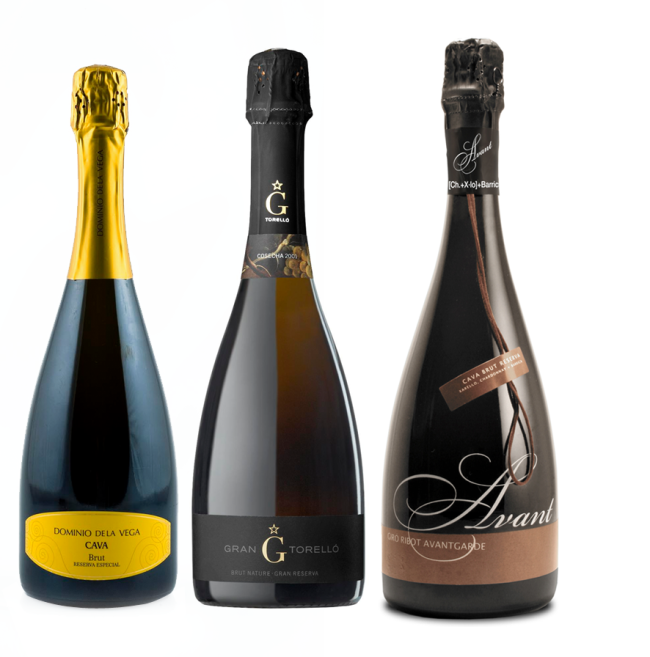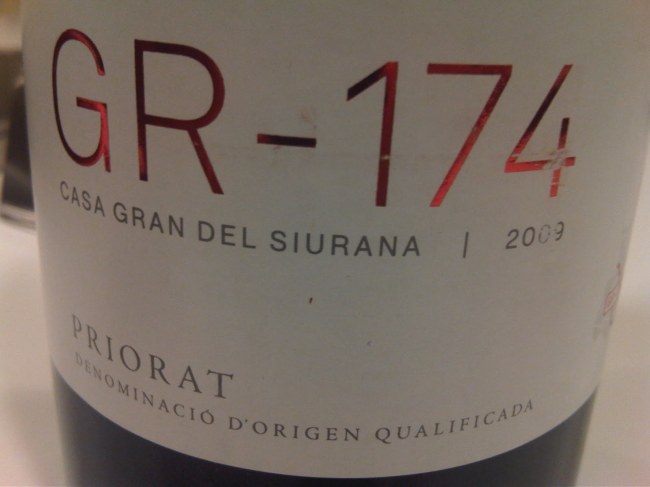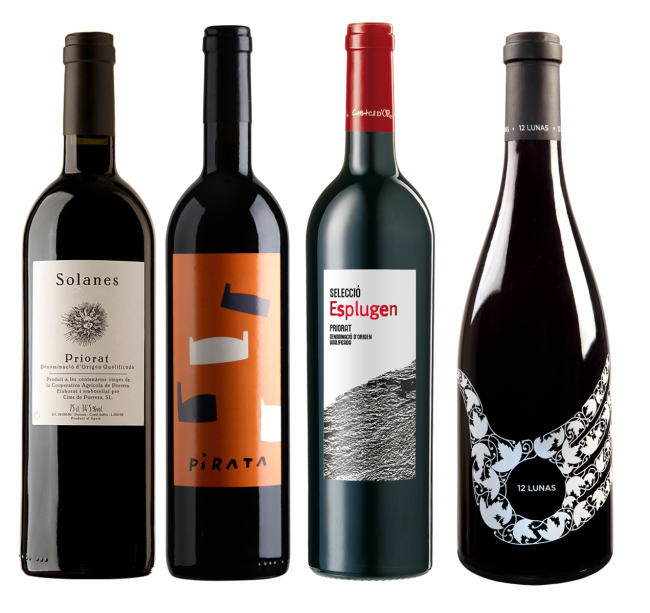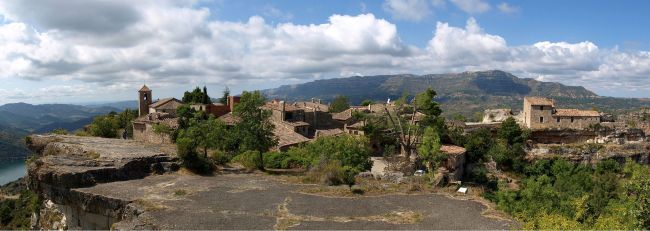
Month: May 2014
Cava Wine Tour – Sant Sadurni d’Anoia, Spain
CAVA (DO)
Cava (Catalan pronunciation: [ˈkaβə], plural caves) sparkling wine of Denominación de Origen (DO) status, most of which is produced in Catalonia. It may be white (blanco) or rosé(rosado). The macabeu, parellada and xarel·lo are the most popular and traditional grape varieties for producing cava.[1] Only wines produced in the champenoise traditional method may be labelled cavas, those produced by other processes may only be called “sparkling wines” (vinos espumosos). About 95% of all cava is produced in the Penedèsarea in Catalonia, with the village of Sant Sadurní d’Anoia being home to many of Spain’s largest production houses.[2] The two major producers are Codorníu and Freixenet.
In the past, cava was referred to as “Spanish champagne”, which is no longer permitted under European Union law, since Champagne has Protected Geographical Status (PGS) and Spain entered the EU in 1986. Colloquially it is still called champán or champaña in Spanish or xampany in Catalan.[1] Today it is defined by law as a “quality sparkling wine produced in a designated region” (vino Espumoso de Calidad Producido en una Región Determinada, VECPRD).
Cava is an important part of Catalan and Spanish family tradition and is often consumed at celebrations like baptisms, marriages, banquets, dinners and parties.
Wine Priorat (DOQ)
Priorat is a Catalan Denominació d’Origen Qualificada (DOQ) in Catalan for wines produced in the Priorat county to the south-west of Catalonia
The DOQ covers 11 municipalities. It primarily produces powerful red wines, which came to international attention in the 1990s. The area is characterised by its unique terroir of black slate and quartz soil known as llicorella.[2]
It is one of only two wine regions in Spain to qualify as DOCa, the highest qualification level for a wine region according to Spanish wine regulations, alongsideRioja DOCa.
Priorat is the Catalan spelling, which is the one usually appearing on wine labels, while the Spanish spelling is Priorato.
Panoramic town of Cornudella, Ciurana Catalonia.
Openings
Benjamin Thompson and molecular cuisine 1814
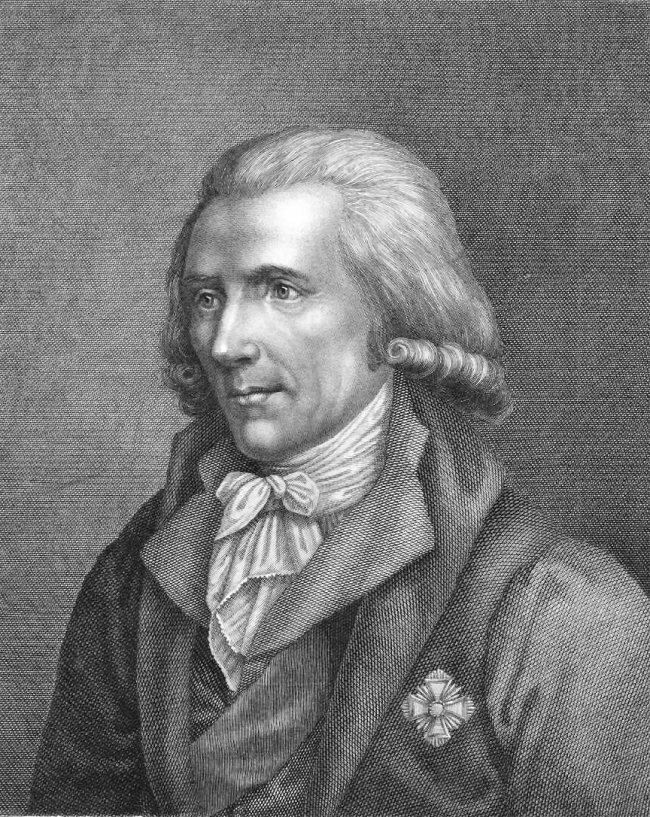
Sir Benjamin Thompson, Count Rumford (in German: Reichsgraf von Rumford), FRS (March 26, 1753 – August 21, 1814) was an American-born Britishphysicist and inventor whose challenges to established physical theory were part of the 19th century revolution in thermodynamics. He also served as a Lieutenant-Colonel in the Loyalist forces in America during the American Revolutionary War. After the end of the war he moved to London where his administrative talents were recognized when he was appointed a full Colonel, and in 1784 received a knighthood from King George III. A prolific designer, he also drew designs for warships. He later moved to Bavaria and entered government service there, being appointed Bavarian Army Minister and re-organizing the army, and, in 1791, was made a Count of the Holy Roman Empire.
Bavarian maturity

The beer garden “Am chinesischen Turm” in theEnglischer Garten in Munich
In 1785, he moved to Bavaria where he became an aide-de-camp to the Prince-elector Charles Theodore. He spent eleven years in Bavaria, reorganizing the army and establishing workhouses for the poor. He also invented Rumford’s Soup, a soup for the poor, and established the cultivation of the potato in Bavaria. He studied methods of cooking, heating, and lighting, including the relative costs and efficiencies of wax candles, tallow candles, and oil lamps.[2] He also founded the Englischer Garten in Munich in 1789; it remains today and is known as one of the largest urban public parks in the world. He was elected a Foreign Honorary Member of theAmerican Academy of Arts and Sciences in 1789.[3] For his efforts, in 1791 Thompson was made a Count of the Holy Roman Empire; he took the name “Rumford” for Rumford, New Hampshire, which was an older name for the town of Concord where he had been married, becoming Reichsgraf von Rumford (English: Count Rumford). .[4]
Experiments on heat
His experiments on gunnery and explosives led to an interest in heat. He devised a method for measuring the specific heat of a solid substance but was disappointed when Johan Wilcke published his parallel discovery first.
Thompson next investigated the insulating properties of various materials, including fur, wool and feathers. He correctly appreciated that the insulating properties of these natural materials arise from the fact that they inhibit the convection of air. He then made the somewhat reckless, and incorrect, inference that air and, in fact, all gases, were perfect non-conductors of heat.[5][6] He further saw this as evidence of the argument from design, contending that divine providence had arranged for fur on animals in such a way as to guarantee their comfort.
In 1797, he extended his claim about non-conductivity to liquids.[7] The idea raised considerable objections from the scientific establishment, John Dalton[8] and John Leslie[9] making particularly forthright attacks. Instrumentation far exceeding anything available in terms of accuracy and precision would have been needed to verify Thompson’s claim. Again, he seems to have been influenced by his theological beliefs[10] and it is likely that he wished to grant water a privileged and providential status in the regulation of human life.[11]
Mechanical equivalent of heat
However, Rumford’s most important scientific work took place in Munich, and centred on the nature of heat, which he contended in An Experimental Enquiry Concerning the Source of the Heat which is Excited by Friction (1798) was not the caloric of then-current scientific thinking but a form of motion. Rumford had observed the frictional heat generated by boring cannon at the arsenal in Munich. Rumford immersed a cannon barrel in water and arranged for a specially blunted boring tool. He showed that the water could be boiled within roughly two and a half hours and that the supply of frictional heat was seemingly inexhaustible. Rumford confirmed that no physical change had taken place in the material of the cannon by comparing the specific heats of the material machined away and that remaining.
Rumford argued that the seemingly indefinite generation of heat was incompatible with the caloric theory. He contended that the only thing communicated to the barrel was motion.
Rumford made no attempt to further quantify the heat generated or to measure the mechanical equivalent of heat. Though this work met with a hostile reception, it was subsequently important in establishing the laws of conservation of energy later in the 19th century.
Rumford’s calorific and frigorific radiation
He regarded coldness to be more than just the absence of heat, but as something real and did experiments to support his theories of calorific and frigorific radiation and said the communication of heat was the net effect of caloric (hot) rays and frigorific (cold) rays. See note 8, “An enquiry concerning the nature of heat and the mode of its communication” Philosophical Transactions of the Royal Society, starting at page 112.
Inventions and design improvements
Thompson was an active and prolific inventor, developing improvements for chimneys, fireplaces and industrial furnaces, as well as inventing the double boiler, a kitchen range, and a drip coffeepot. He invented a percolating coffee pot following his pioneering work with the Bavarian Army, where he improved the diet of the soldiers as well as their clothes.
The Rumford fireplace created a sensation in London when he introduced the idea of restricting the chimney opening to increase the updraught, which was a much more efficient way to heat a room than earlier fireplaces. He and his workers modified fireplaces by inserting bricks into the hearth to make the side walls angled, and added a choke to the chimney to increase the speed of air going up the flue. The effect was to produce a streamlined air flow, so all the smoke would go up into the chimney rather than lingering, entering the room, and often choking the residents. It also had the effect of increasing the efficiency of the fire, and gave extra control of the rate of combustion of the fuel, whether wood or coal. Many fashionable London houses were modified to his instructions, and became smoke-free.
Industrial furnaces

Cross section of aRumford furnace, with the fuel chamber at the left
Thompson also significantly improved the design of kilns used to produce quicklime, and Rumford furnaceswere soon being constructed throughout Europe. The key innovation involved separating the burning fuel from the limestone, so that the lime produced by the heat of the furnace was not contaminated by ash from the fire.
Thompson became a celebrity when news of his success spread. His work was also very profitable, and much imitated when he published his analysis of the way chimneys worked. In many ways, he was similar to Benjamin Franklin, who also invented a new kind of heating stove.
The retention of heat was a recurring theme in his work, as he is also credited with the invention of thermal underwear.[12]
Light and photometry
Rumford worked in photometry, the measurement of light. He made a photometer and introduced the standard candle, the predecessor of the candela, as a unit of luminous intensity. His standard candle was made from the oil of a sperm whale, to rigid specifications.[13] He also published studies of “illusory” or subjective complementary colors, induced by the shadows created by two lights, one white and one colored; these observations were cited and generalized by Michel-Eugène Chevreul as his “law of simultaneous color contrast” in 1839.[14]
Molecular gastronomy
Molecular gastronomy is a subdiscipline of food science that seeks to investigate the physical and chemical transformations of ingredients that occur while cooking. Its program includes three axes, as cooking was recognized to have three components, which are social, artistic and technical.[4] Molecular cooking is one application of molecular gastronomy; it means cooking with modern tools. Molecular cuisine is a modern style of cooking, and takes advantage of many technical innovations from the scientific disciplines.
The term “molecular gastronomy” was coined in 1988 by late Oxford physicist Nicholas Kurti and the French INRA chemist Hervé This.[5] Some chefs associated with the term choose to reject its use,[6] preferring other terms such as modernist cuisine, culinary physics and experimental cuisine.
Thuis gastronomic
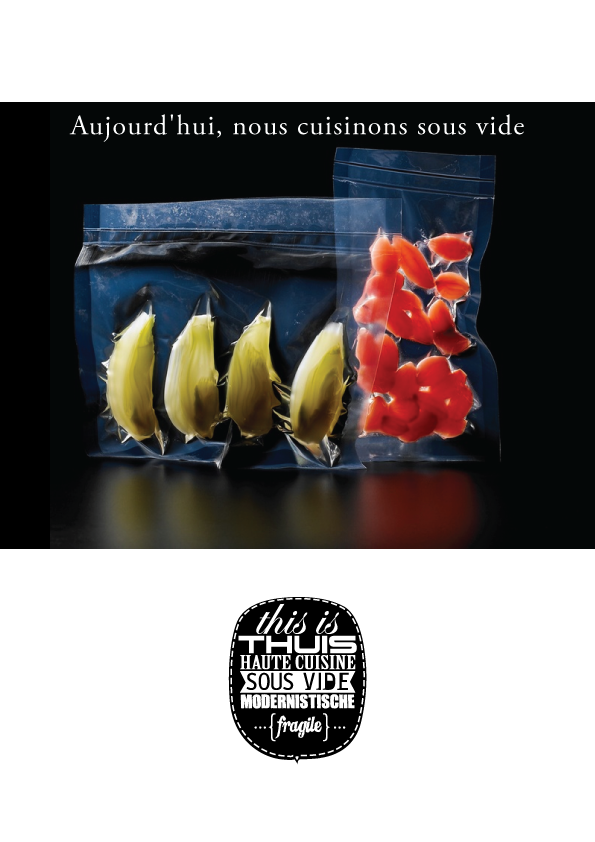
Thuis Haute Cuisine Sous Vide sont heureux de vous inviter à notre dîner gastronomique. Notre proposition est -˝l’absence de matière˝-. Entrant> Fluctuation Caesar: Mousse laitue, émulsion de lardon, pâtes aux anchois, râpé de pain à l’ail, mayonnaise de parmesan, huile d’olive salé et chips. Entrant deux températures> Inercia: Gélatine de jus de salade de crudites froid, magre de canard sous vide a 50 °C, pain et tomate chaude, vinaigrette de curry et purée de pamplemousse. Potage> Big Band: Fumet clarié de poisson, croquette liquide de beurre de crevettes et crevettes. Plat> Mousse quantique: Mousse sous vide de morue reconstruit, pain avec aïoli, purée de haricots blancs, tomates séchées et huile émulsionnée avec fruits de mer. Dessert> Espace-temps: Glace de café 100 % arabica et amaretto, mousse de mascarpone, pâte sable et mousse cacao. Thé-cafe> Référentiel: Infusion du coquelicot gourmand, dentelles, café 100 % arabica, mousse de lait et vanille de Baileys. Digestif> Fusion: Sambuca glacée, croûte de café et Sambuca ambé. Service de sommelier> Cava Brut Catalan Vin Blanc Prieuré Catalan -˝SVP confirmer votre présence par e-mail ou sms˝-
Quantum Kitchen
Quantum fluctuations
Quantum fluctuations
In quantum physics, a quantum vacuum fluctuation (or quantum fluctuation or vacuum fluctuation) is the temporary change in the amount of energy in a point in space,[1] as explained in Werner Heisenberg‘s uncertainty principle.
According to one formulation of the principle, energy and time can be related by the relation[2]
That means that conservation of energy can appear to be violated, but only for small values of t (time). This allows the creation of particle-antiparticle pairs of virtual particles. The effects of these particles are measurable, for example, in the effective charge of the electron, different from its “naked” charge.
In the modern view, energy is always conserved, but the eigenstates of the Hamiltonian (energy observable) are not the same as (i.e., the Hamiltonian doesn’t commute with) the particle number operators.
Quantum fluctuations may have been very important in the origin of the structure of the universe: according to the model of inflation the ones that existed when inflation began were amplified and formed the seed of all current observed structure.
